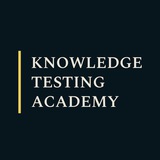MCQ NO.818 | Medichem
Amphotericin B is act by ?
Amphotericin B is act by ?
Anonymous Quiz
42%
Inhibit Ergosterol Synthesis
26%
Inhibit Thymidilate Synthesis
22%
Inhibit 14 Alpha Demethylase
9%
Inhibit Sequilene Epoxide
MCQ NO.819 | Medichem
Azole most likely to get into the cerebral spinal fluid (CSF)?
Azole most likely to get into the cerebral spinal fluid (CSF)?
Anonymous Quiz
13%
Fluconazole
13%
Itraconazole
17%
Ketoconazole
57%
All
MCQ NO.820 | Medichem
Mechanism of Action of Itraconazole?
Mechanism of Action of Itraconazole?
Anonymous Quiz
31%
Inhibit ergosterol synthesis
26%
Create pore in Fungal cell wall
39%
Inhibit synthesis of fungal pyrimidine
5%
Abnormal M Phase configuration
MCQ NO.821 | Medichem
Ring System present in Methotraxate ?
Ring System present in Methotraxate ?
Anonymous Quiz
30%
Pteridine
25%
Purine
35%
Pyrimidine
10%
Imidazole
MCQ NO.822 | Medichem
Drug used to treat Hodgkin’s Disease ?
Drug used to treat Hodgkin’s Disease ?
Anonymous Quiz
26%
Mechlorethamine
45%
Cyclophosphamide
23%
Chlorambucil
6%
Isofosfamide
MCQ NO.823 | Medichem
Mechanism of cellular resistance to polyfunctional alkylating drugs?
Mechanism of cellular resistance to polyfunctional alkylating drugs?
Anonymous Quiz
37%
Decreased DNA repair capability
33%
Reduced production of glutathione
23%
Increased permeability to the drug
7%
None
MCQ NO.824 | Medichem
Polyfunctional alkylating agent used specifically for chronic myeloid leukemia?
Polyfunctional alkylating agent used specifically for chronic myeloid leukemia?
Anonymous Quiz
38%
Cyclophosphamide
36%
Busulfan
20%
Thiopeta
5%
Dacarbazine
MCQ NO.825 | Medichem
Major toxicity of alkylating drugs ?
Major toxicity of alkylating drugs ?
Anonymous Quiz
24%
Alopecia
38%
Myelosuppression
24%
Renal damage
15%
Hepatic failure
MCQ NO.826 | Pharmacology
Wilm’s Tumor treated by ?
Wilm’s Tumor treated by ?
Anonymous Quiz
19%
Doxorubicin
48%
Actinomycin D
25%
Bleomycin
8%
Cytarbine
MCQ NO.827 | Pharmacology
Most useful alkylating drug currently available ?
Most useful alkylating drug currently available ?
Anonymous Quiz
29%
Busulfan
22%
Thiopeta
17%
Dacarbazine
32%
Cyclophosphamide
MCQ NO.828 | Pharmacology
Chronic Lymphatic Leukemia treated with ?
Chronic Lymphatic Leukemia treated with ?
Anonymous Quiz
19%
Mechlorethamine
36%
Cyclophosphamide
37%
Chlorambucil
8%
Isofosfamide
MCQ NO. 829 | Pharmacology
Nitrosourea with minimal bone-marrow suppression and effective in treating pancreatic, islet cell carcinoma?
Nitrosourea with minimal bone-marrow suppression and effective in treating pancreatic, islet cell carcinoma?
Anonymous Quiz
18%
Lomustine
44%
Carmustine
28%
Streptozocine
11%
Procarbazine
MCQ NO. 830 | Pharmacology
Campatothecin analogue used to treat ovarian cancer is?
Campatothecin analogue used to treat ovarian cancer is?
Anonymous Quiz
22%
Etoposide
30%
Vincristine
29%
Paclitaxel
20%
Irinothecan
🔴 Mechanism of Action 🔴
🔺Nonsteroidal Antiinflammatory Drugs :-
NSAIDs maily act by the inhibit function of Cyclooxygenase enzyme (COX 1& 2)
Cyclooxygenase enzyme responsible for synthesis of prostaglandin. (You know prostaglandin shows Afferent nerve sensations)
So, NSAIDs simply block COX enzyme & reduce pain sensation and inflammation like prostaglandin effects.
Some NSAIDs also selective for COX1 & COX2.
Some NSAIDs acts antipyretics e. g. Paracetamol.
🔺Beneficial Actions due to Prostaglandin synthesis inhibition.
1.Analgesia (prevention of pain nerve ending sensitization)
2.Antipyresis
3.Antiinflammatory
4.Antithrombotic
5.Closure of ductus arteriosus in newborn.
🔺Nonsteroidal Antiinflammatory Drugs :-
NSAIDs maily act by the inhibit function of Cyclooxygenase enzyme (COX 1& 2)
Cyclooxygenase enzyme responsible for synthesis of prostaglandin. (You know prostaglandin shows Afferent nerve sensations)
So, NSAIDs simply block COX enzyme & reduce pain sensation and inflammation like prostaglandin effects.
Some NSAIDs also selective for COX1 & COX2.
Some NSAIDs acts antipyretics e. g. Paracetamol.
🔺Beneficial Actions due to Prostaglandin synthesis inhibition.
1.Analgesia (prevention of pain nerve ending sensitization)
2.Antipyresis
3.Antiinflammatory
4.Antithrombotic
5.Closure of ductus arteriosus in newborn.
🔴 Mechanism of Action 🔴
🔺Antirheumatoid Drugs:-
Some important classes of drugs shows mechanism as follows & gives antirheumatic action....
Rheumatoid arthritis (RA) is an autoimmune disease in which there is joint inflammation, synovial proliferation and destruction of articular cartilage.
1. Immunosupressants
Inhibit I. cytokine production
II. Chemotaxis
III. Cell mediated
immune reaction
2.TNF alpha inhibitors acts by inhibiting the cytokine TNF alpha (plays important role in inflammatory cascade by activating membrane bound receptor TNFR1 and TNFR2)
Actually these two receptors present on T-cell surface & macrophages.
So, TNF alpha inhibitors mainly suppress the function of macrophages and T-cell.
🔺Antirheumatoid Drugs:-
Some important classes of drugs shows mechanism as follows & gives antirheumatic action....
Rheumatoid arthritis (RA) is an autoimmune disease in which there is joint inflammation, synovial proliferation and destruction of articular cartilage.
1. Immunosupressants
Inhibit I. cytokine production
II. Chemotaxis
III. Cell mediated
immune reaction
2.TNF alpha inhibitors acts by inhibiting the cytokine TNF alpha (plays important role in inflammatory cascade by activating membrane bound receptor TNFR1 and TNFR2)
Actually these two receptors present on T-cell surface & macrophages.
So, TNF alpha inhibitors mainly suppress the function of macrophages and T-cell.
🔴ADR OF DMARD'S🔴
➡️Upset stomach
➡️Nausea
➡️Diarrhea
➡️Hair loss
➡️Mouth sores
➡️Rash or serious skin reactions
➡️Liver,kidney or lung problems
➡️Upset stomach
➡️Nausea
➡️Diarrhea
➡️Hair loss
➡️Mouth sores
➡️Rash or serious skin reactions
➡️Liver,kidney or lung problems
MCQ NO 831 | Pharmacology
Diffusion of drugs across cell membrane:
Diffusion of drugs across cell membrane:
Anonymous Quiz
23%
A. Is dependent upon metabolic activity of the cell
24%
B. Is competitively inhibited by chemically related drugs
46%
C. Is affected by extent of ionization of drug molecules
7%
D. Exhibits saturation kinetics
MCQ NO 832 | Pharmacology
Which of the following is not true of the blood-brain barrier:
Which of the following is not true of the blood-brain barrier:
Anonymous Quiz
26%
A. It is constituted by tight junctions between endothelial cells of brain capillaries &glial tissue
21%
B. It allows passage of lipid soluble drugs into the brain
26%
C. It limits entry of highly ionized drugs into the brain
26%
D. It regulates passage of substances from brain into blood
MCQ NO 833 | Pharmacology
Which of the following drugs exhibits ‘therapeutic window’ phenomenon:
Which of the following drugs exhibits ‘therapeutic window’ phenomenon:
Anonymous Quiz
18%
A. Captopril
28%
B. Furosemide
35%
C. Diazepam
19%
D. Imipramine
